
What Are The Strongest Magic Mushroom Species?
You've probably heard of cubensis and liberty caps, what about Psilocybe azurescens or Panaeolus cyanescens? And did you know there are over 200 species of psilocybin-containing magic mushrooms in the world? Read on to discover the 10 strongest magic mushrooms on Earth.
It might be that you’re only aware of one or two types of magic mushroom. However, there are in fact hundreds of species out there—and probably more that we’re not aware of. They range from highly potent to fairly weak by comparison. Below, we list the top 10 strongest magic mushrooms on Earth.
The Definition of “Magic Mushroom”
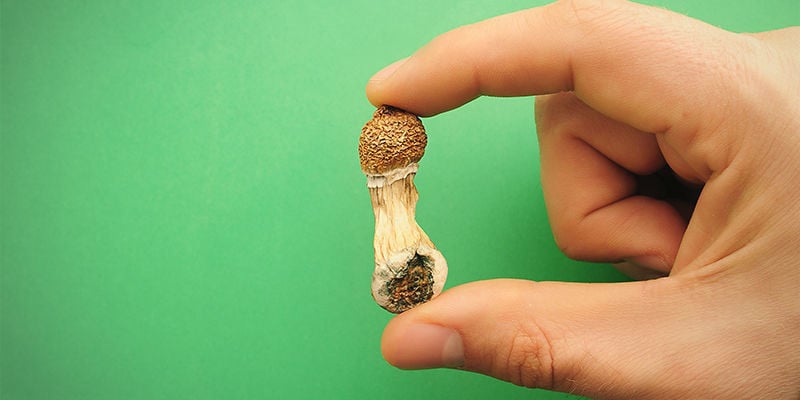
Magic mushrooms; a term almost everyone knows. But how well do they know it, really? On its simplest level, a magic mushroom is one that induces a psychedelic experience. But how do they do this? And which mushrooms are capable?
There are many species of mushrooms that can cause some sort of “high”, but not all are what we mean when we speak of magic mushrooms. For instance, the famous fly agaric mushroom (which is a deliriant or hypnotic) is certainly psychotropic, but it doesn’t fall into the magic mushroom category. Instead, when we speak of magic mushrooms, we’re referring to those that contain the active substances psilocin, psilocybin, and, to a lesser extent, baeocystin.
The Active Ingredients in Magic Mushrooms
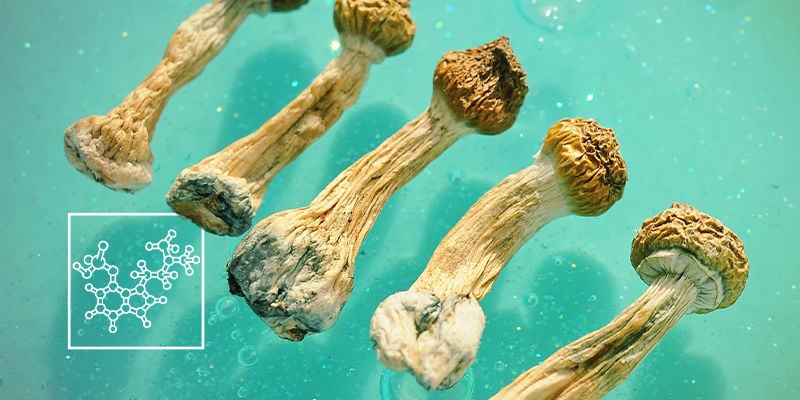
The ratio of these three substances is not the same across species, subspecies, or even within groups of the same mushroom. And how they’re balanced influences the effects of the mushroom trip. Some can be more visual, while others can be more meditative.
Psilocybin
Psilocybin is the precursor to psilocin. Also known as a prodrug, psilocybin is found in the highest concentration in dried mushrooms. While this substance is ultimately responsible for catalysing the high, it must first be metabolised in the body into psilocin before actually exerting hallucinogenic effects. This process can also be carried out artificially before consumption.
Psilocin
Psilocin is found most abundantly in fresh mushrooms, or in lemon tek—a process whereby psilocybin is converted into psilocin using lemon juice. Psilocin is the substance in mushrooms that directly interacts with the body and causes the psychedelic trip.
Baeocystin
This is the lesser-studied sibling of psilocin and psilocybin. In fact, it is a derivative of psilocybin. Exactly what role it plays, or what effect it has on the body, is unknown. During the few times baeocystin has been administered alone, it exerted comparable effects to the same amount of psilocybin. However, a more recent study from 2019 saw no significant change in mouse behaviour when given baeocystin compared to saline solution.
How Many Magic Mushroom Species Are There?
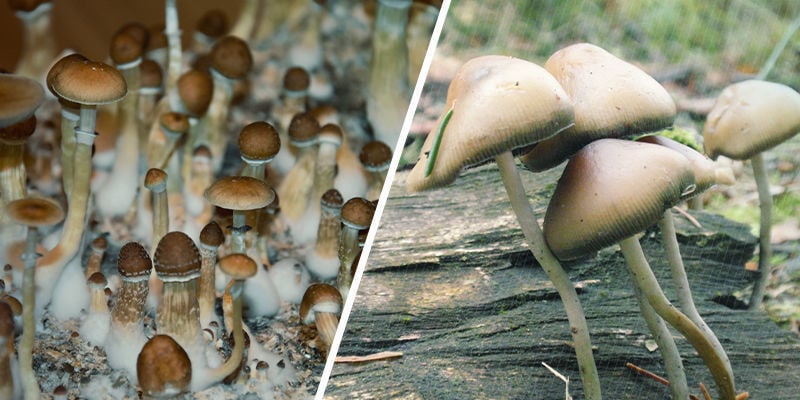
It is estimated that there are around 200 species of psilocybin-containing mushrooms within the Basidiomycota mushroom family. Of these, most fall into the Psilocybe genus. It is worth noting that these are the only known species. Indeed, it is suspected that there are many magic mushroom species we are not yet aware of, as they have been (until recently) woefully understudied.
The Top 10 Strongest Magic Mushroom Species
So here we have the 10 strongest species of magic mushroom. As previously stated, strengths can vary massively within species and groups, so always exercise caution when taking mushrooms, especially if you are a novice. The numbers given here offer a rough indication of the ratios you can expect. That being said, they should give you some insight into these wonderful, mystical organisms.
Available information on magic mushroom species is limited. Where possible, the concentrations of psilocin, psilocybin, and baeocystin will be given as a percentage of the dried mushroom. However, these figures are not available for all magic mushroom species, and so the stats will vary from species to species.
At this point it’s worth noting: If you intend to go out and pick any of these strains in the wild, make sure you know exactly what you are looking for. Many strains have lookalikes that are incredibly poisonous, and can even be fatal.
1. Psilocybe azurescens
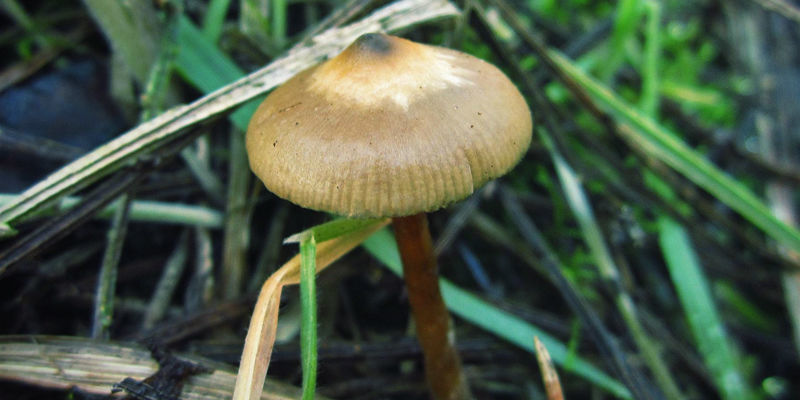
First on the list is Psilocybe azurescens. This is, as far as we know, the world’s strongest magic mushroom. And it will blow your mind—if you can get your hands on it. In the wild, it is limited to the West Coast of the US, found most abundantly in deciduous woodlands around the Columbia River in the Pacific Northwest. It is possible to grow Psilocybe azurescens indoors if you’re knowledgeable about mushroom cultivation, but you’re unlikely to find a grow kit anywhere. Outdoors, however, you can successfully grow a Psilocybe azurescens patch in your garden.
When dry, Psilocybe azurescens contains up to 1.8% psilocybin, 0.5% psilocin, and 0.4% baeocystin. While this may not sound like a high concentration, it’s enough to take you to another world.
2. Panaeolus cyanescens (Copelandia cyanescens)
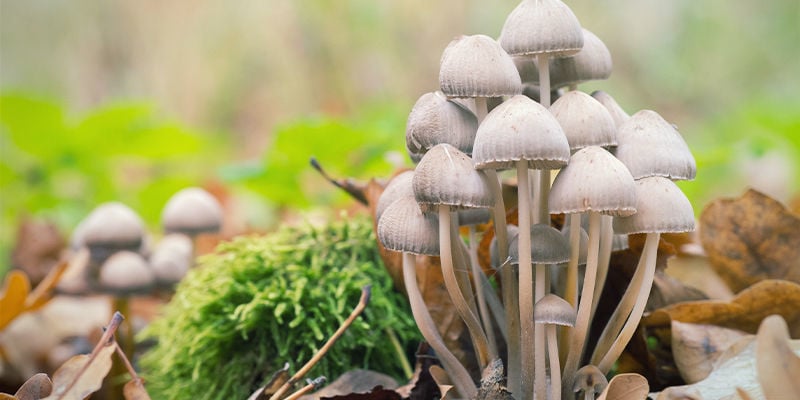
This is one of the strongest species in the world, considered to be up to five times stronger than certain strains of P. cubensis. They are colloquially known as Copelandia Hawaiian, and are quite famous due to their strength and relative ease of growth. They can be cultivated indoors, and it is possible to purchase pre-colonised grow kits. They are found all over the world as a dung-loving species. So much so that the substrate in Panaeolus cyanescens grow kits is usually horse dung.
The percentage of psilocin and psilocybin together in Panaeolus cyanescens can be as high as 2.95%, making these shrooms extremely potent.
3. Psilocybe semilanceata
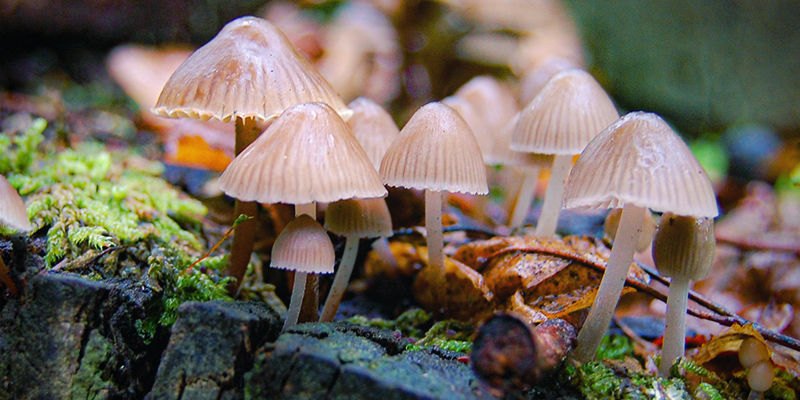
For many, Psilocybe semilanceata is the quintessential magic mushroom. Colloquially known as the "liberty cap”, it is this mushroom that has the famous nipple and the instantly recognisable bell-shaped cap. Psilocybe semilanceata is the most widespread magic mushroom in the wild, growing across 17 countries in northern Europe, where it is considered to be native. There are reports of it being found further afield than this too. Also, it is one of the strongest in the world.
In dry Psilocybe semilanceata samples, psilocybin concentrations of as little as 0.2% and as much as 2.37% have been measured. In fact, the highest levels of psilocybin ever measured have been found in these species. However, the average concentration sits around 1%, which is why they do not top this list. Baeocystin levels sit around 0.36%.
4. Psilocybe cyanescens
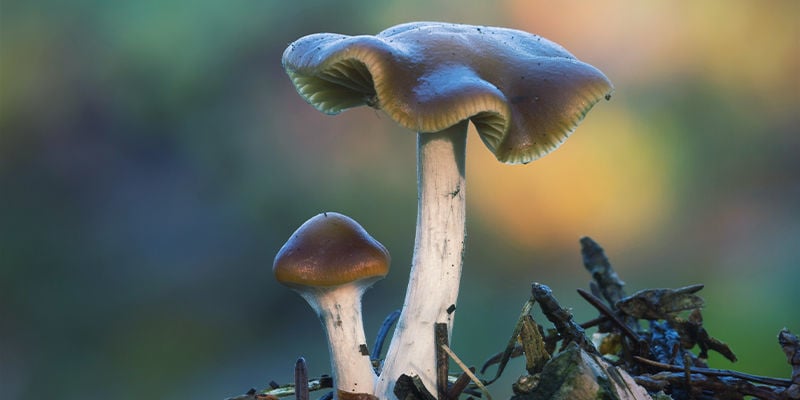
Psilocybe cyanescens (sometimes referred to as wavy caps) is another species of potent psychedelic mushroom. These are also widespread; increasingly so due to the increased use of mulch to suppress weed growth. Loving mulch, not soil, cyanescens grows in huge numbers and is incredibly potent. In the UK, a colony of 100,000 mushrooms was once found. Imagine the high! But they are found across Europe and the US too, with US strains reportedly being stronger than their European cousins. However, this may be due to the wrong species being tested in Europe.
In total, their indole content (the three compounds together) when dry, can reach up to 1.96%. When wet, the individual ratios are 0.39–0.66% of psilocybin and 0.75–1.96% of psilocin.
5. Psilocybe bohemica
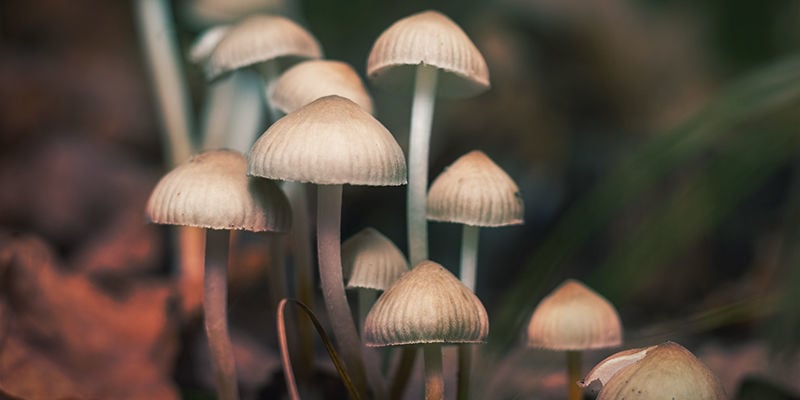
Psilocybe bohemica is found around the Czech Republic and central Europe—which was once known as Bohemia. It is a mushroom that bears many similarities to Psilocybe serbica, which is located in the Balkan region. A word of caution; both of these mushrooms look similar to and grow in the same conditions as Galerina, which is highly toxic and dangerous. Make sure you properly identify what you have before you risk consuming it.
Dried, the concentration of psilocybin ranges between 0.11% and 1.34%, so it can get very strong. The highest concentration is found in the caps.
6. Psilocybe cubensis
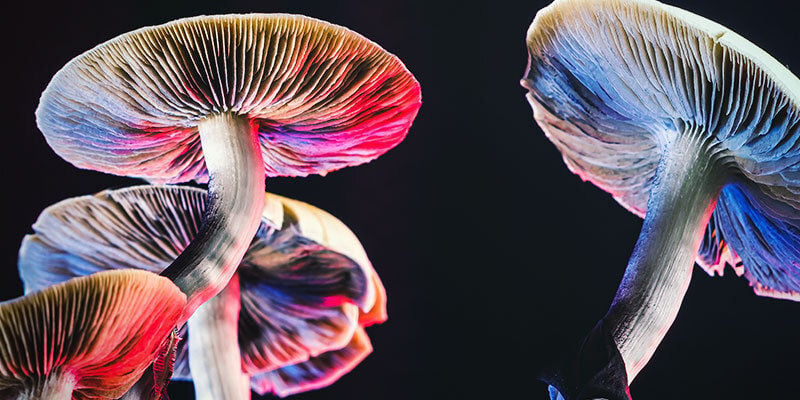
Psilocybe cubensis is one of the most commonly sourced species of magic mushroom because it is the most easily cultivated. Most of the grow kits available online contain P. cubensis mycelium. Due to their ease of growth, a lot of research has been carried out with cubensis, and many different subspecies have been bred, making it a versatile species. As such, they have a very large range when it comes to concentrations of indoles.
In the wild, Psilocybe cubensis is found spread across the world in tropical climates. Dried, the concentrations of psilocin and psilocybin are 0.14–0.42% and 0.37–1.30%, respectively. If the grow kits are bought commercially, you will have a better idea about the potency, which can make Psilocybe cubensis great for beginners. This is because they can be easier to accurately dose compared to wild strains. You can even use the Zamnesia Dosage Calculator to work out approximate cubensis doses.
7. Conocybe cyanopus
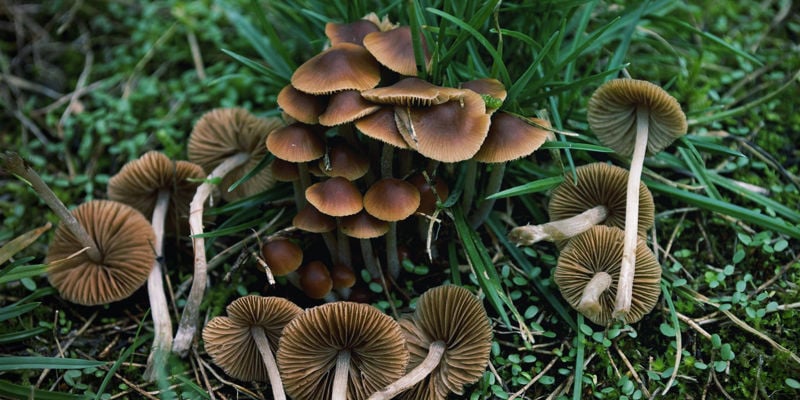
Conocybe cyanopus is a lesser-known species of magic mushroom. And for good reason; it looks incredibly similar to a couple of deadly species that grow in the same environments. As a result, it is usually not worth taking. As there will be other species available that come with a much lower risk, we recommend that you stay away from this species unless you are an expert or in the company of one.
That being said, Conocybe cyanopus still deserves a place on this list due to its strength. Dried, it contains somewhere between 0.5% and 1% psilocybin.
8. Psilocybe samuiensis
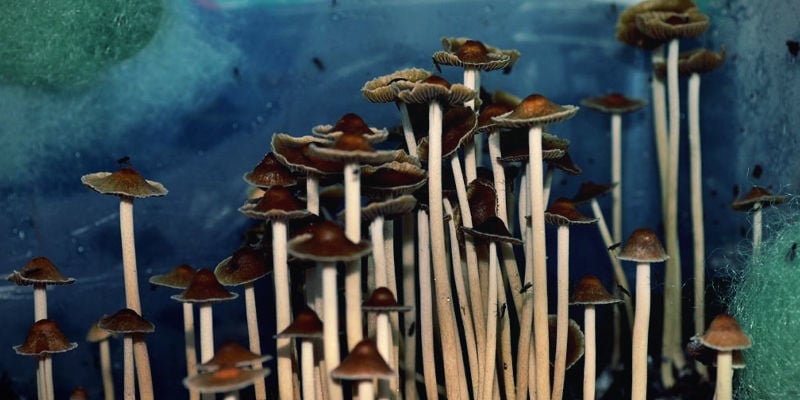
Found in Thailand, this is another tropical species of magic mushroom. Initially only known to grow on the island of Koh Samui, it has since been found in other locations too. It is wide, with a reddish-brown cap, and grows quite thick.
The ratios of psilocybin, psilocin, and baeocystin in dried specimens are: 0.023–0.90%, 0.05–0.81%, and 0.01–0.05%.
9. Psilocybe tampanensis
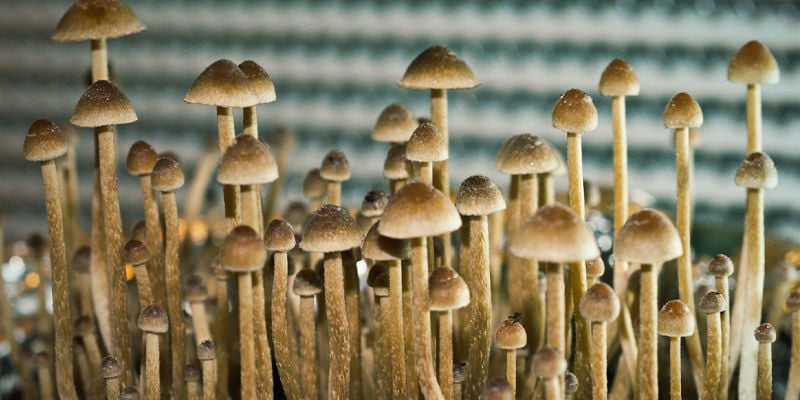
This is the species that magic truffles are often derived from. Truffles are simply the subterranean part of mushroom, but they are one and the same organism. In the wild, these are rare, and the sclerotia (the actual name for a truffle) grows as a form of protection in case of wildfires or other traumatic events.
However, due to the legal status of sclerotia in parts of Europe, they have become a popular choice for those looking to trip legally, as this part of the organism is not illegal. The dried mushroom can contain up to 1% psilocin and psilocybin, while the sclerotia may contain up to 0.68% psilocybin.
10. Panaeolus cambodginiensis (Copelandia cambodginiensis)
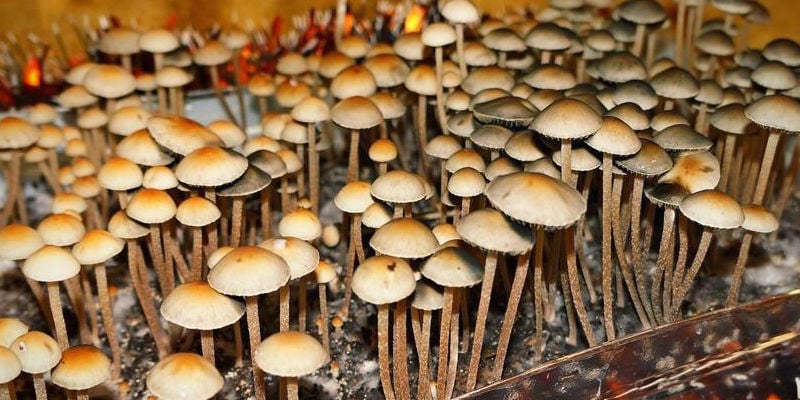
Found in Asia and Hawaii, Panaeolus cambodginiensis was first reported in Cambodia, where it loves to grow in buffalo dung. White and brown in colour and with long stems, it’s a pretty mushroom. All psilocybin-containing mushrooms can turn blue, as this is the colour that psilocin turns when it oxidises, but Panaeolus cambodginiensis is known to turn very blue, very easily.
The indole content of Panaeolus cambodginiensis is around 0.55% psilocybin and 0.6% psilocin on average.
Differences in Strength Between Magic Mushrooms
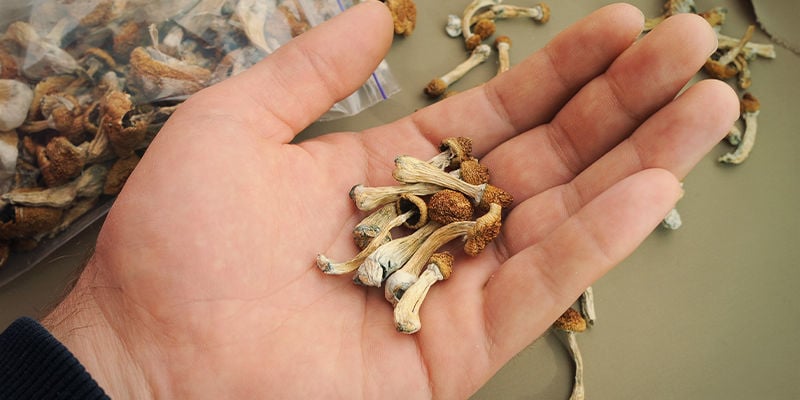
As noted, magic mushrooms can vary dramatically in potency, both between species and between individuals within a species.
Cultivated vs Wild Magic Mushrooms
Variations in strength are common within both cultivated and wild mushroom colonies. A lot of it comes down to the substrate and growing conditions, but even this won’t determine exact indole concentrations. So don’t think that just because you’ve got cultivated mushrooms they’ll be more predictable than their wild brethren.
Potency Differences Within a Particular Species
Mushrooms within a species can vary massively in potency too. Within the cubensis species, for example, some strains can be up to four times stronger than others! So if you’re just getting “cubensis”, start low and build up. Don’t assume that they’re going to be weak!
In the wild, some specimens have been found to be up to 10 times stronger than others. Differences like this can make dosing little more than a guessing game. One way to even it out a little is to take a variety of mushrooms, as some are likely to be mild, and others strong. By taking them in this way, you’re more likely to get an average potency.
As a general rule, smaller mushrooms are stronger gram for gram, containing higher concentrations of indoles. That being said, there will still be more overall in a larger mushroom.
How To Dose Magic Mushroom Species With Varying Potency
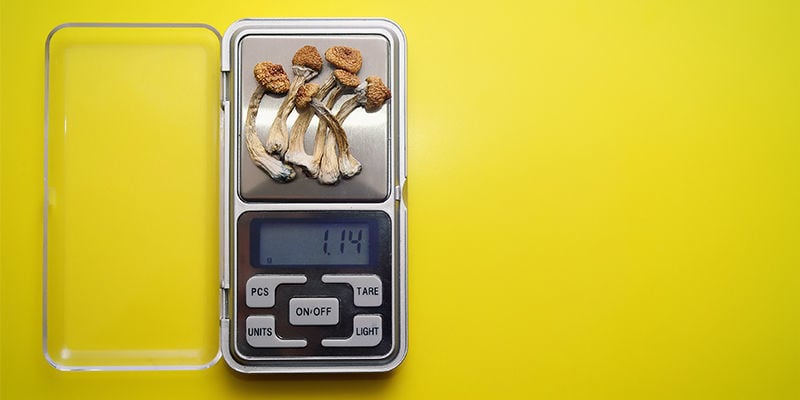
Start small. If you’re inexperienced, or dealing with a new species and don’t know how strong it is, just be sensible. You can always take more next time.
With homegrown cubensis shrooms, you can use our dosage calculator to estimate a good amount to take. Though, again, this only provides an average, and cannot give an exact dosage.
Is Stronger Always Better With Magic Mushrooms?
Not at all. Though stronger mushrooms can offer stronger trips, these can also be achieved with higher doses of weaker mushrooms. For many, weaker shrooms might be more appropriate, as they allow the user to fine-tune their trip, rather than going straight for all-out lunacy. Though, if that is what you’re after, the stronger the better!
- (n.d.). Further Investigations On Psychoactive Mushrooms Of The Genera Psilocybe, Gymnopilus And Conocybe - http://www.museocivico.rovereto.tn.it
- (n.d.). Synthesis And Biological Evaluation Of Tryptamines Found In Hallucinogenic Mushrooms: Norbaeocystin, Baeocystin, Norpsilocin, And Aeruginascin - https://pubs.acs.org
-
 5 min
26 April 2024
How To Sober Up From A Mushroom Trip
Shroom trips are very often enjoyable experiences, and when they're not, it's nowhere near as bad as popular culture would have you believe. But sometimes, we might want to come down early. While...
5 min
26 April 2024
How To Sober Up From A Mushroom Trip
Shroom trips are very often enjoyable experiences, and when they're not, it's nowhere near as bad as popular culture would have you believe. But sometimes, we might want to come down early. While...
-
 2 min
20 September 2022
920: International Magic Mushroom Day
920 is the "420" of magic mushrooms: a day to celebrate the magic and science of psychedelic mushrooms. Learn more, and tune-in to this psychedelic holiday. Here's everything you need to know.
2 min
20 September 2022
920: International Magic Mushroom Day
920 is the "420" of magic mushrooms: a day to celebrate the magic and science of psychedelic mushrooms. Learn more, and tune-in to this psychedelic holiday. Here's everything you need to know.
-
 6 min
3 September 2021
How To Make A Laminar Flow Hood For Mushrooms
Often find mould growing in your substrate where there should be mycelium—even though you've cleaned everything with alcohol and bleach? Well, things float on the air. To create the ultimate...
6 min
3 September 2021
How To Make A Laminar Flow Hood For Mushrooms
Often find mould growing in your substrate where there should be mycelium—even though you've cleaned everything with alcohol and bleach? Well, things float on the air. To create the ultimate...
-
 6 min
18 June 2021
The Six Types Of Hallucinations You Can Experience
We all know that psychedelic drugs can cause hallucinations, but what about the other causes? Mental illness, sleep deprivation, and even certain foods can trigger hallucinations as well. Ranging...
6 min
18 June 2021
The Six Types Of Hallucinations You Can Experience
We all know that psychedelic drugs can cause hallucinations, but what about the other causes? Mental illness, sleep deprivation, and even certain foods can trigger hallucinations as well. Ranging...
-
 4 min
22 April 2021
How To Make Lemon Tek For A Faster Mushroom/Truffle Trip
Sometimes, you just want to come up hard and fast. Luckily, there's a way. If you're after mind-bending trips in under twenty minutes, you've come to the right place. Just make sure you're prepared...
4 min
22 April 2021
How To Make Lemon Tek For A Faster Mushroom/Truffle Trip
Sometimes, you just want to come up hard and fast. Luckily, there's a way. If you're after mind-bending trips in under twenty minutes, you've come to the right place. Just make sure you're prepared...
-
 4 min
18 September 2020
Magic Truffles vs Magic Mushrooms: Who will win?
Magic truffles and shrooms are different yet similar. Both can serve the same purpose, but there are differences between the two that mean one may suit you more than the other. Find out more below.
4 min
18 September 2020
Magic Truffles vs Magic Mushrooms: Who will win?
Magic truffles and shrooms are different yet similar. Both can serve the same purpose, but there are differences between the two that mean one may suit you more than the other. Find out more below.





 United States
United States











